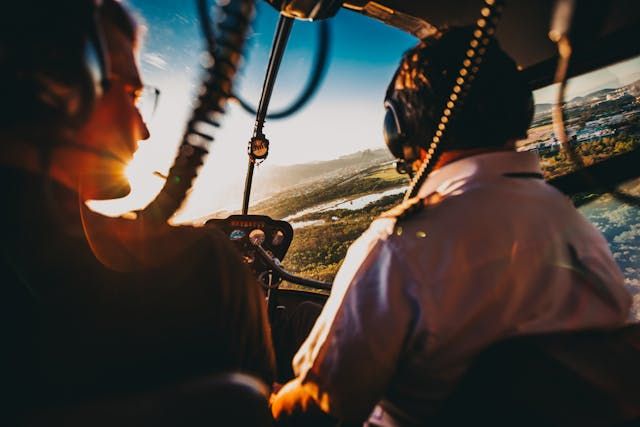A Day in the Life of a Commercial Pilot

Commercial pilots start their day before sunrise through meticulous preparation and precise execution of their duties.
Pilots start their day by conducting thorough briefings, inspections, and checks to prepare their aircraft and crew for a safe flight.
The job’s demanding nature and extended hours do not diminish the rewarding experience because pilots remain dedicated to delivering safe and efficient travel.
Early Morning Preparation
The day starts with a clear direction. Pilots conduct meetings with crew members to verify that all essential flight elements are properly prepared for safety purposes.
Every detail of the plan needs careful attention to achieve operational efficiency. Pilots examine weather conditions while monitoring schedule alterations and predicting operational obstacles.
The combination of foresight and detailed attention creates a solid foundation for achieving journey success. The aviation industry depends on a complete pre-flight review to sustain both safety excellence and operational efficiency.
Aircraft Inspection and Systems Check
Before starting the engines, pilots conduct a comprehensive walk-around inspection to ensure the aircraft is in top condition.
Checking the wings, fuselage, and landing gear for any damage is a crucial task to prevent any issues later. In the cockpit, pilots perform systems checks to verify that instruments and controls are functioning correctly. Any irregularities or potential malfunctions are addressed immediately.
The cockpit setup must be perfect to ensure that communication and navigation run smoothly throughout the flight. Safety depends on these meticulous checks.
Boarding and Takeoff
Once the final checks are completed, passengers begin boarding. The cabin crew prepares for departure, and the pilots take their seats in the cockpit, ready for takeoff.
The aircraft taxis to the runway, engines roaring to life, and the crew ensures all systems are go. Upon receiving clearance, the plane accelerates down the runway and lifts into the air. The moment the wheels leave the ground marks the start of a journey full of possibilities.
Pilots remain focused, ensuring every step of the takeoff process is flawless, precise, and executed with unwavering attention to detail, guaranteeing safety and smooth operation.
Cruising and In-Flight Communication
At cruising altitude, the pace slows, but pilots remain highly alert. They monitor the aircraft’s performance, adjust the route if necessary, and keep communication open with air traffic control.
Maintaining situational awareness is key, even at higher altitudes. Pilots manage flight details and make adjustments as needed, ensuring a smooth experience for passengers.
Routine communication updates, weather checks, and air traffic information are exchanged regularly. A David Clark aviation headset helps pilots remain in constant communication with air traffic controllers and other crew members, allowing for effective coordination despite the noise of the engines and other distractions.
Descent, Landing, and Conclusion of the Flight
As the flight nears its destination, pilots begin preparing for the descent. Landing procedures involve careful coordination, with the aircraft’s speed, altitude, and approach all adjusted to ensure a safe touchdown.
The runway comes into view as the final preparations are made. Pilots focus on controlling the descent adjusting flaps and landing gear for a smooth arrival.
Once the plane touches down, it taxis to the gate. After a successful landing, pilots prepare for their next mission, ensuring the safety and comfort of their passengers.
Post-Flight Review and Rest
After the flight is completed, pilots conduct a post-flight review. They ensure that all necessary documentation is filed and any issues during the flight are logged for follow-up.
This review is important for maintaining a high standard of safety and efficiency. Once all post-flight tasks are handled, pilots may have a short break or rest before their next assignment.
If multiple flights are scheduled, they prepare for the next journey. The time spent resting or reviewing is crucial for ensuring alertness and readiness for the next takeoff.
Conclusion
The life of a commercial pilot is demanding but rewarding. Every day presents new challenges, from early morning preparations to the complexity of in-flight operations.
Pilots face dynamic conditions and work tirelessly to ensure safety. As the sun sets, pilots reflect on another successful flight, knowing they’ve helped passengers reach their destinations safely and efficiently.
The sky may be their workplace, but it’s also their home, offering a unique sense of fulfillment and purpose that keeps them grounded despite the altitude.






